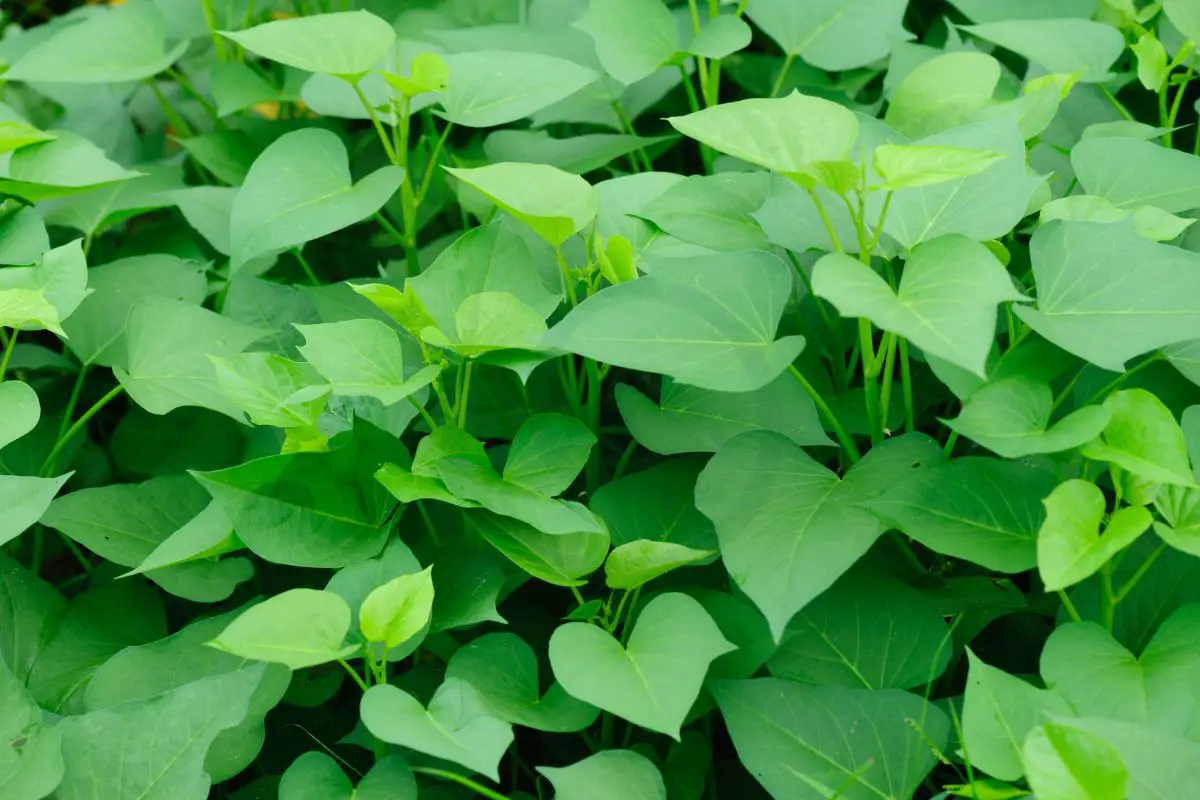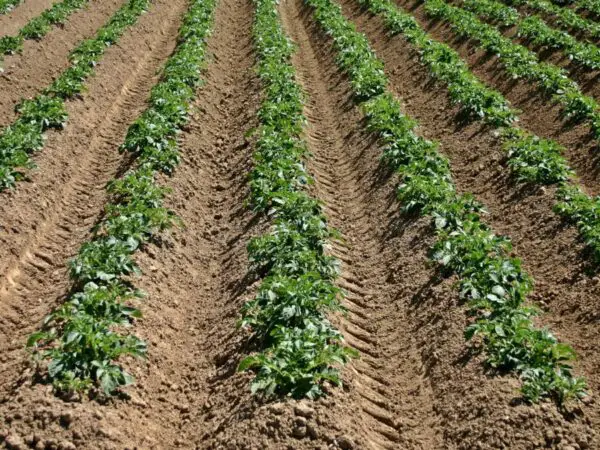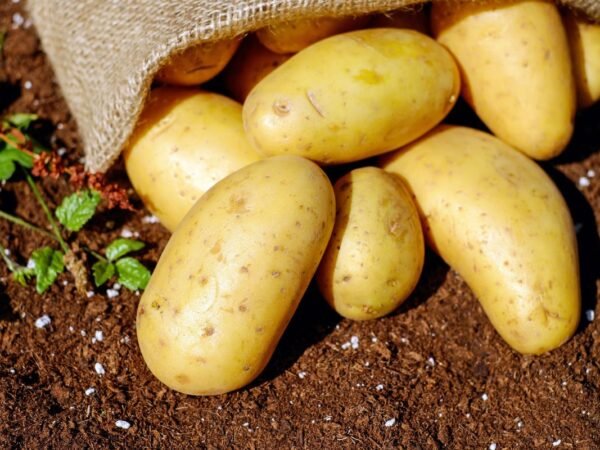Looking for information on Sweet Potato Harvest Time? You've come to the right place! As an experienced guide in agriculture and seasonal crop management, I'm here to provide you with all the essential details and tips you need to maximize your sweet potato harvest.
When is the best time to harvest sweet potatoes? Typically, sweet potatoes are ready for harvest about 90-120 days after planting, depending on the variety and growing conditions. Here's a quick guide to help you make the most of your sweet potato harvest:
- Monitor the growth: Keep an eye on the foliage and tubers to determine maturity.
- Check the soil temperature: Harvest when the soil temperature is above 55°F (13°C) to prevent damage to the tubers.
- Harvest gently: Use a fork or spade to carefully loosen the soil around the sweet potatoes before lifting them out to avoid damage.
- Cure the tubers: After harvesting, cure the sweet potatoes in a warm, humid place for 1-2 weeks to improve flavor and storage life.
- Store properly: Store cured sweet potatoes in a cool, dark, and well-ventilated area to prevent sprouting and decay.
For more in-depth insights into sweet potato cultivation, including soil preparation, planting techniques, pest management, and harvest time, stay tuned for further updates and resources. Your journey to a bountiful sweet potato harvest is just beginning!
Key Takeaways
- Timing is Key: Harvest sweet potatoes when the vines have withered, usually around 3-4 months after planting.
- Gentle Harvesting: Use a digging fork to carefully unearth sweet potatoes to prevent damage.
- Curing Process: Cure harvested sweet potatoes in a warm, humid place for 10-14 days to enhance flavor and shelf life.
- Check for Ripeness: Look for signs like yellowing leaves and firm skin to determine if sweet potatoes are ready to harvest.
- Storage Tips: Store cured sweet potatoes in a cool, dark place with good ventilation to prevent sprouting or rotting.
- Maximize Yield: Proper care, timely harvesting, and post-harvest handling can help maximize your sweet potato yield.
Sweet Potato Overview
Growth Cycle
Sweet potatoes go through distinct growth stages: sprouting, vining, flowering, and tuber formation. Flowering usually occurs around 90-120 days after planting. When the vines start to yellow and wither, it's a sign that the tubers are ready for harvest.
Ideal Conditions
To ensure optimal growth, sweet potatoes require a warm temperature between 70-80°F and at least 6 hours of sunlight daily. Proper drainage is crucial as waterlogged soil can lead to rotting. Consistent soil moisture levels, not too dry or wet, are essential for healthy tuber development.
Varieties
There are various sweet potato varieties with differences in taste, texture, and color. When choosing a variety, consider factors like sweetness, moisture content, and nutritional value. Each type has specific growth requirements; for instance, some may prefer sandy soil while others thrive in loamy soil.
Preparing for Planting
Soil Preparation
To ensure a successful sweet potato harvest, gardeners must start by preparing the soil properly. Begin by adjusting pH levels to match the requirements of sweet potatoes. Choose well-draining soil that is rich in organic matter to promote healthy growth. Remove rocks and debris that could impede the development of sweet potato roots and stems.
Planting Time
Determining the ideal planting time for sweet potatoes is crucial for a bountiful harvest. Consider factors such as frost dates and soil temperature when deciding when to plant. Take into account your region's climate to choose the most suitable time for planting. Planning ahead will lead to a more successful outcome in your garden.
Sweet Potato Care
Watering Needs
Monitoring soil moisture levels regularly is essential for sweet potato care. Water deeply but infrequently to promote deep root growth, ensuring the plant's stability. Adjust the watering frequency according to weather conditions to prevent over or under-watering.
Pest Management
Identify common pests that can harm sweet potatoes, such as aphids and sweet potato weevils. Implement natural pest control methods like introducing beneficial insects or using neem oil. Regularly inspect plants for any signs of pest infestation, such as holes in leaves or wilting.
Fertilization
For optimal growth, use organic fertilizers high in potassium and phosphorus to nourish sweet potatoes. Avoid over-fertilization, which can lead to nutrient imbalances and harm the plants. Apply fertilizers at the right time during the growing season to support healthy development.
Signs of Maturity
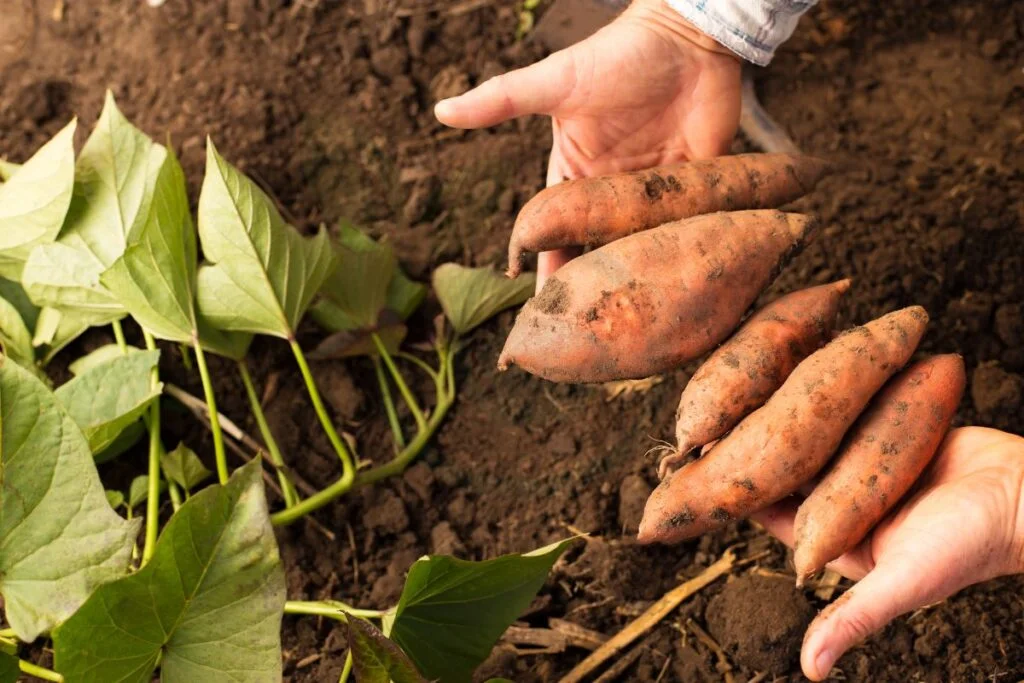
Visual Cues
Look for visual indicators of sweet potato readiness. Observe the vines for any color changes, as a sign that the tubers are maturing. Check for leaf wilting, which can also indicate that the sweet potatoes are ready to be harvested.
Monitor the tuber size and skin color for harvesting cues. A mature sweet potato will have a certain size and skin color that indicates it is ready to be harvested.
Plant Age
Understand how plant age affects sweet potato development. Harvest at the appropriate age to achieve the desired tuber size. Consider the maturity of vines when determining the optimal harvest time.
Harvest Timing
Optimal Season
Plant and harvest sweet potatoes during spring or early summer for the best results. Consider temperature fluctuations and daylight changes to ensure optimal growth conditions. Plan your harvest carefully to coincide with the peak of sweet potato maturity.
Weather Factors
Stay vigilant about weather conditions that can affect sweet potato development. Shield plants from extreme cold and frost by using covers or mulch. Adjust watering schedules and protective measures according to upcoming weather forecasts.
Harvesting Techniques
Gentle Digging
When harvesting sweet potatoes, use care to prevent damage. Employ tools like forks or hands to gently unearth tubers from the soil. Minimize bruising and cuts to ensure a successful harvesting process.
Root Handling
Handle sweet potato roots delicately to prevent damage during harvest. Avoid excessive bending or twisting of tubers, which can lead to spoilage. Properly store the harvested roots to maintain their quality.
Post-Harvest Process
Curing Sweet Potatoes
Temperature Control
- Store sweet potatoes at optimal temperatures to prevent sprouting.
- Avoid exposure to extreme heat or cold during storage.
- Monitor storage conditions regularly for quality maintenance.
Humidity Levels
- Maintain proper humidity levels during storage to prevent rot.
- Store sweet potatoes in well-ventilated areas to reduce moisture buildup.
- Check for signs of mold or decay caused by high humidity.
Storage Tips
- Store sweet potatoes in a cool, dark, and well-ventilated place.
- Use breathable containers or mesh bags for storage.
- Regularly inspect stored tubers for any signs of spoilage.
After the harvesting process, the next crucial step in preserving sweet potatoes is the curing process. Curing involves allowing the sweet potatoes to dry and heal minor cuts and bruises acquired during harvest. This period typically lasts around 10 days, enhancing their flavor and increasing their shelf life.
During the curing process, it's essential to pay attention to temperature control. Storing sweet potatoes at optimal temperatures helps prevent sprouting and maintain their quality. Extreme heat or cold can lead to spoilage, so it's vital to store them in a place with consistent temperatures.
In addition to temperature, humidity levels play a significant role in preserving sweet potatoes. Proper humidity levels help prevent rot, mold growth, and decay. Storing them in well-ventilated areas reduces moisture buildup, ensuring they stay fresh for longer periods.
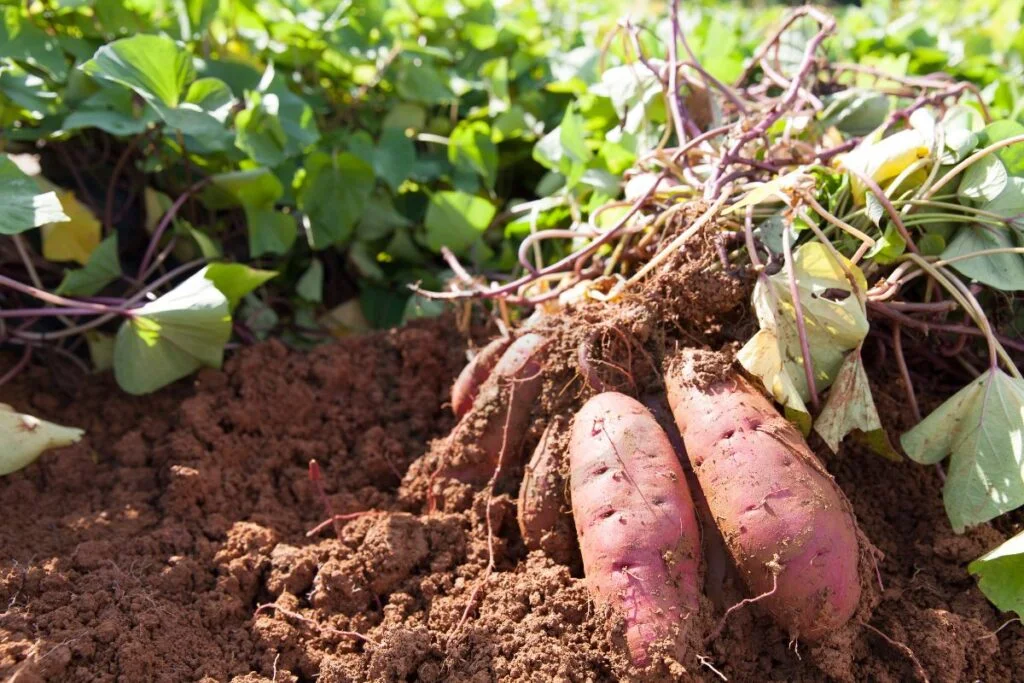
When considering storage tips, remember that a cool, dark, and well-ventilated place is ideal for storing sweet potatoes. Using breathable containers or mesh bags allows air circulation and prevents moisture accumulation. Regularly checking stored tubers for any signs of spoilage ensures early detection and removal of damaged ones.
Maintaining an optimal environment post-harvest is key to enjoying your sweet potato harvest throughout the year. By following these curing and storage guidelines, you can ensure that your harvested sweet potatoes stay fresh and flavorful for an extended period.
Common Challenges
Pest Issues
Pests can infest sweet potatoes during storage, causing damage and spoilage. To combat this, ensure to clean storage areas regularly to eliminate potential breeding grounds. Consider using natural repellents like neem oil to deter pests effectively.
Rot Prevention
Prevent rot in sweet potatoes by storing them in dry environments with good ventilation. Regularly inspect the tubers for any signs of decay or soft spots. Promptly discard any spoiled or damaged sweet potatoes to prevent further contamination.
Maximizing Yield
Crop Rotation
Crop rotation is essential for preventing soil depletion and maintaining the health of sweet potato crops. By rotating sweet potato crops with other plants, you can improve soil quality and reduce the risk of pests and diseases. Selecting companion plants that complement sweet potatoes, such as legumes or grains, can enhance soil fertility.
- Rotate sweet potato crops to prevent soil depletion
- Choose companion plants that benefit sweet potato growth
- Follow a crop rotation schedule to maintain soil health
Organic Practices
Embracing organic methods in sweet potato cultivation can lead to healthier yields and better environmental impact. By avoiding synthetic chemicals and pesticides, you promote natural biodiversity in the soil. Incorporating sustainable practices like composting and mulching helps nourish the soil for future harvests.
- Embrace organic methods for growing and harvesting sweet potatoes
- Avoid synthetic chemicals and pesticides in sweet potato cultivation
- Incorporate sustainable practices to promote soil fertility and biodiversity
Final Remarks
You've learned all about sweet potato cultivation, from planting to post-harvest care. Understanding the signs of maturity and perfecting your harvesting techniques are crucial for a bountiful yield. Remember, challenges may arise, but with proper care, you can overcome them and maximize your harvest. By following these steps diligently, you'll soon enjoy the fruits of your labor.
Now it's time to put your knowledge into action. Head out to your garden, apply what you've learned, and watch your sweet potato crop thrive. Don't forget to share your success with others and continue learning about best practices in agriculture. Your dedication will not only reward you with a plentiful harvest but also inspire those around you to embark on their gardening journey.
Frequently Asked Questions
When is the best time to harvest sweet potatoes?
The ideal time to harvest sweet potatoes is typically in the fall, around 100-120 days after planting. Look for signs like yellowing leaves and vines starting to wither before harvesting.
How do you know when sweet potatoes are ready to be harvested?
Sweet potatoes are ready for harvest when the leaves start turning yellow and the vines begin to die back. Gently dig around a plant to check the tubers' size; mature ones are about 3 inches in diameter.
What are some common challenges faced during sweet potato harvesting?
Common challenges during sweet potato harvesting include damage or bruising during digging, pest infestations like wireworms, and rotting due to improper storage conditions post-harvest.
How can I maximize my sweet potato yield during harvesting?
To maximize your sweet potato yield, ensure proper soil preparation before planting, practice crop rotation, provide adequate water and nutrients during growth, monitor for pests regularly, and harvest carefully without damaging the tubers.
What post-harvest processes should be followed after harvesting sweet potatoes?
After harvesting sweet potatoes, cure them by storing at high humidity and temperatures around 85-90°F for 4-7 days. This process helps heal any cuts or bruises on the skin and enhances their flavor and shelf-life.
Image Source: Paid image from CANVA

